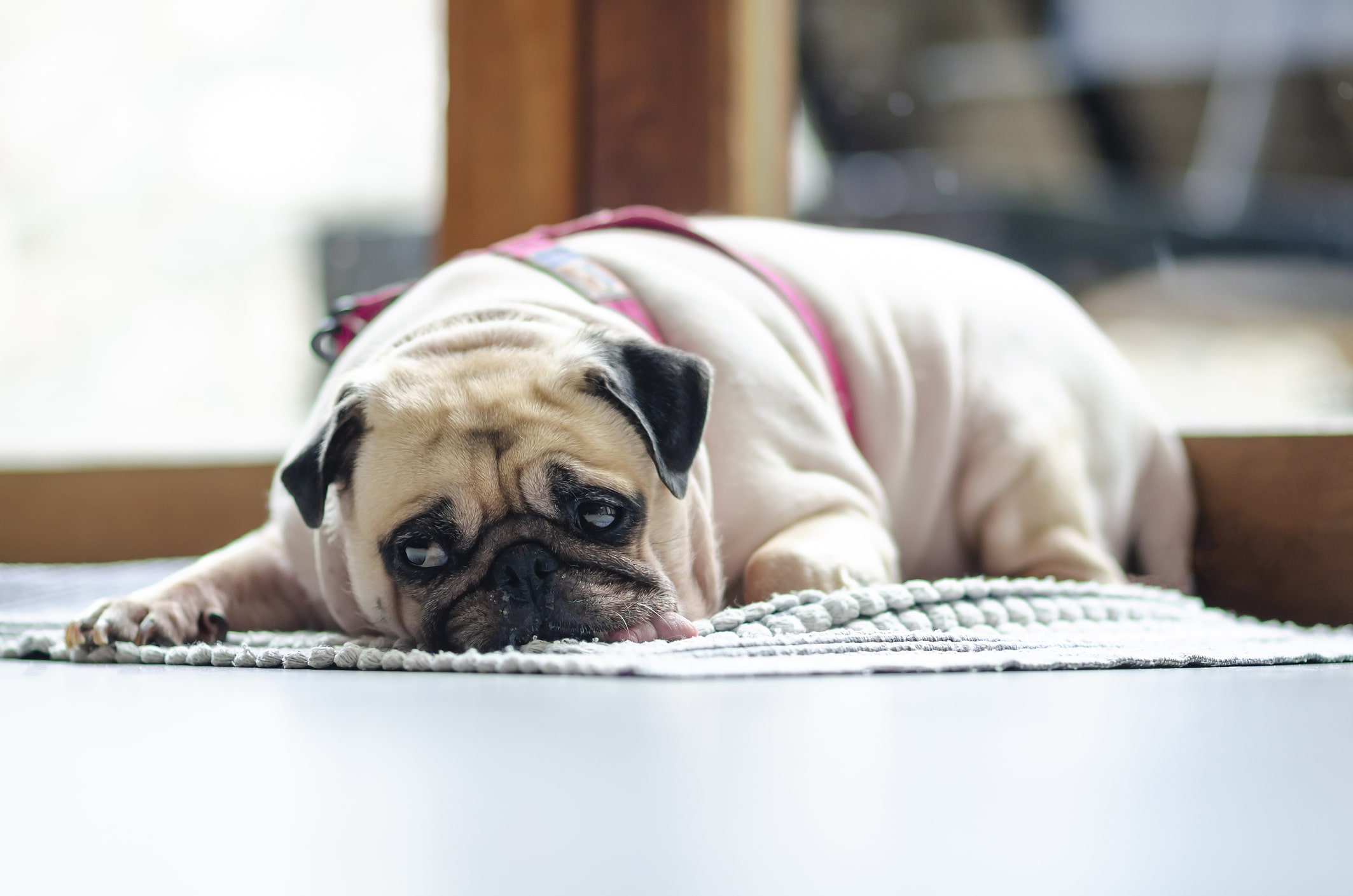Gum is an enjoyable treat for humans, but for dogs it’s actually dangerous if ingested.
What to do if your dog eats gum
Dr. Tina Wismer, senior director of ASPCA Animal Poison Control Center, says if your pet gets into something potentially toxic, first check the ingredient label on the product. If the ingested item contains xylitol and you notice any abnormal behavior from your pet, go to your local veterinary clinic immediately.
“A veterinarian will likely first check your dog’s blood sugar and liver enzymes to see if they are abnormal,” she says. “If your dog does have low blood sugar, your vet may give a source of sugar — dextrose — IV to bring their sugar levels back up to avoid any serious complications. Always call the vet as soon as possible, as preventing problems is more helpful than treating them.”
Why is xylitol toxic to dogs?
Many gums — especially those that are sugar-free — contain the sweetener xylitol. Xylitol is a sweetener most commonly found in food products but can be found in other consumer goods, like toothpaste, as well.
Dr. Wismer says xylitol causes low blood sugar and liver injury in dogs. While low blood sugar can occur very quickly — as soon as 30 minutes after ingestion — it can take up to 12 hours for symptoms to appear after ingestion.
Signs of low blood sugar in dogs include:
- Weakness
- Unsteadiness
- Shaking
- Seizures — if it goes untreated
Signs of liver injury in dogs can include:
- Decrease in appetite
- Lethargy
- Yellowing of the skin
- Vomiting
- Diarrhea
Dr. Wismer says symptoms indicating liver injury in your dog may not be seen for two or three days after ingestion.
“The amount of xylitol found in different products — even different flavors of gum — can vary widely, so having information about the item ingested, how much was ingested and knowing your pet’s weight is important,” says Dr. Wismer.
Other concerns when dogs eat gum
VCA Animal Hospitals Regional Technician Director Melissa Hulgreen says ingestion of toxic substances is relatively common in dogs — especially curious puppies. Melissa says that while gum ingestion is not the No. 1 toxicity they see, most people do have gum in their house, car or personal bag, so the likelihood of exposure is higher for pets compared to something less common like rat bait.
The potential risk of dogs eating gum is two-fold, says Melissa. The lesser risk is that of gastrointestinal blockage.
“Because chewing gum is not readily broken down when ingested like most other foods, there is a minimal risk of developing a gastrointestinal blockage depending on the size of the animal and the amount of gum consumed,” she says.
Signs of a gastrointestinal blockage in dogs include:
- Vomiting (This typically occurs multiple times and pet parents often report that their pet can’t keep anything down, even water.)
- Anorexia (Not wanting to eat at all.)
- Hyporexia (Not eating as much as they usually would.)
- Lethargy
- Abdominal discomfort (The pet is tender when touched or picked up around the belly area, is unwilling to lay down and unable to get into comfortable positions.)
“It is important to remember that these are general clinical signs that can be seen with a variety of health conditions, not just gastrointestinal obstruction, so it is always important to seek medical advice from a veterinarian if you are concerned,” Melissa says.
But that is not usually the primary concern and there is a good chance the dog will pass the gum without problem. However, you should let your veterinarian know how much gum was ingested so that she can assess the risk of blockage.
What does the vet do after your dog eats gum
Melissa says when you first arrive at the vet, a triage technician will ask you some questions:
- About how long ago did your dog eat the gum?
- How much was ingested?
- Have you noticed any changes in your pet’s behavior since ingesting the gum?
“It is really helpful to bring the packaging of the product they ingested — this is applicable to any toxin ingestion — because it will help the veterinary team discern exactly what your pet was exposed to and at what dose,” Melissa says.
If your pet also ate the packaging, do your best to provide the brand name and type of gum.
“If there is a strong suspicion that your dog ingested gum containing xylitol, the veterinarian will likely recommend that they induce vomiting immediately to prevent any further absorption of xylitol into your dog’s body,” says Melissa.
Once your pet is initially stabilized, the veterinarian will discuss any further treatment or monitoring.
“This will likely include overnight hospitalization with IV fluids and sugar supplementation, seizure watch and liver protectant medications,” Melissa says.
If it is determined that your pet ingested gum that did not contain xylitol, the veterinarian will discuss the pros and cons of further treatment.
“At this point, the main concern would be the ingestion of foreign material and determining the probability of your pet being able to pass said foreign material — undigested gum and any wrappers or packaging — without incident,” Melissa says.
Never induce vomiting at home after your dog eats gum
Pet parents should never induce vomiting at home or give any medications that were not previously prescribed unless directed to do so by a veterinarian, Melissa says.
“When we induce vomiting in the clinic, it is done in a controlled environment with trained medical staff, typically with injectable medications,” she says. “The most serious complication that can occur when we induce vomiting is aspiration — when the pet accidentally inhales some of the stomach contents during the process. This can lead to serious complications such as pneumonia and result in a longer hospital stay for your pet. The risk of aspiration can increase when owners try to give anything by mouth at home as they are unable to control the dose given and often struggle with the animal because of the bad taste.”
How to keep pets safe from xylitol toxicity
Dr. Wismer says when purchasing a new item, check the ingredient list for xylitol. If you have a pet that gets into things or a mischievous new puppy, avoid bringing that particular item into your home.
“If you do bring home products containing xylitol, make sure to keep them in a safe place out of paws’ reach,” she says. “Make sure to keep items like purses or backpacks off the floor, so that there is less opportunity for a nosy pet to find out what’s inside.”
But if your pet does get into gum, treat it as an emergency and call the vet right away.






